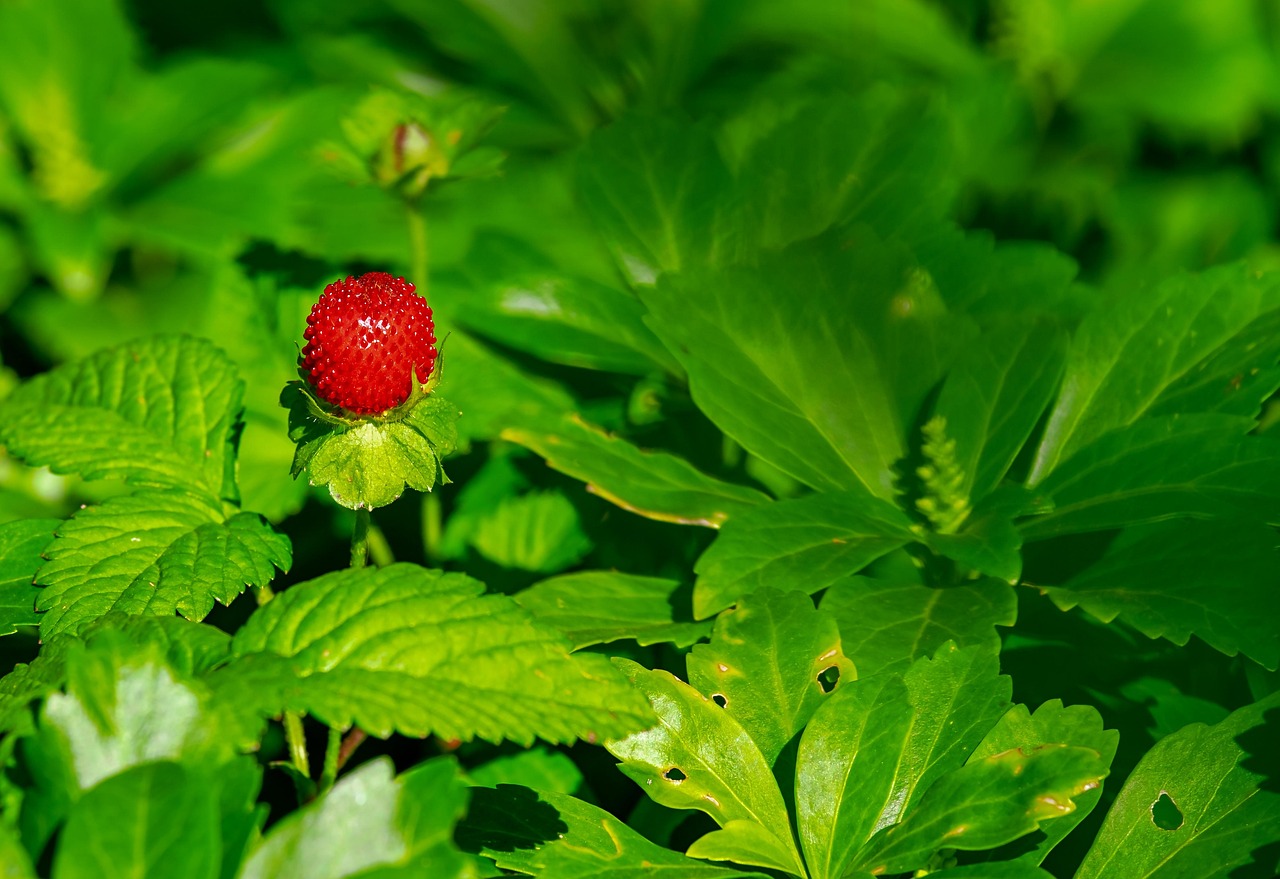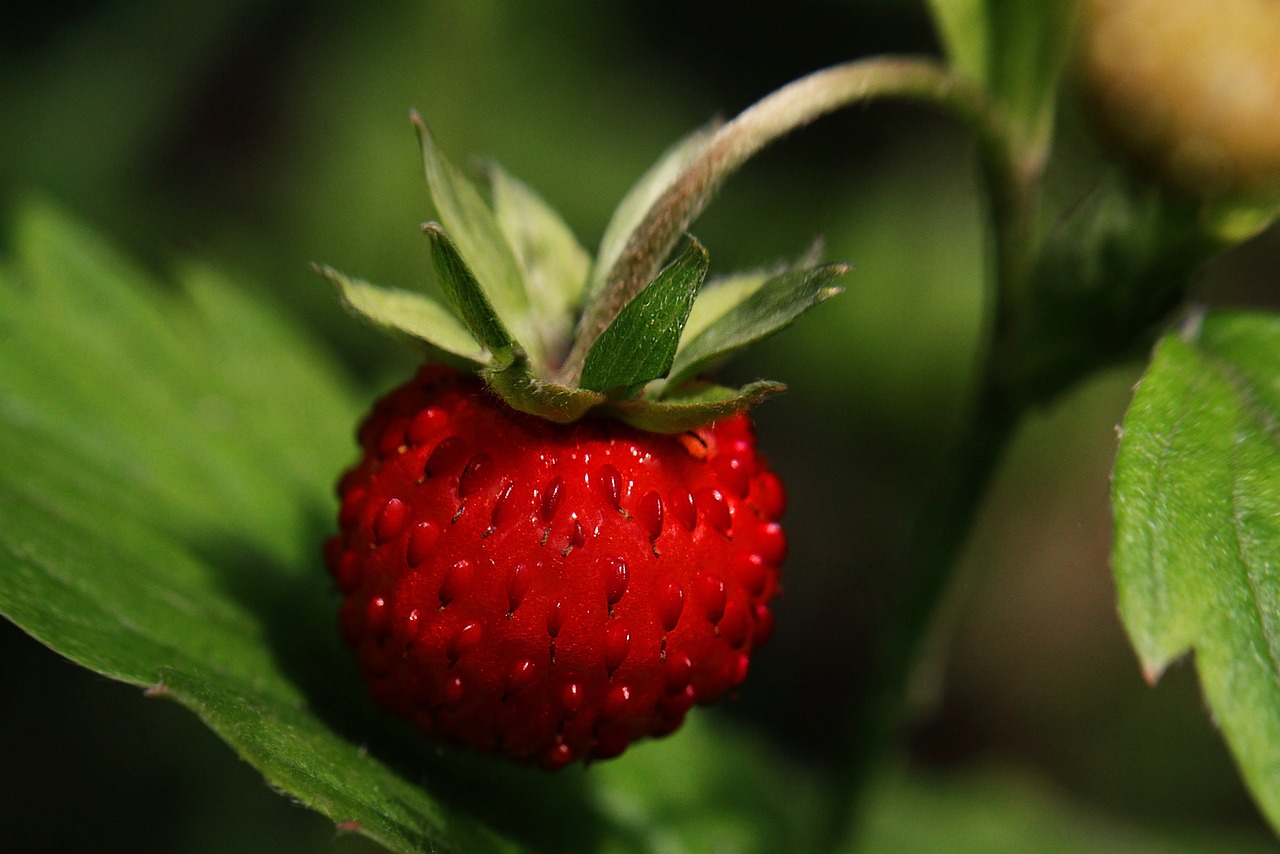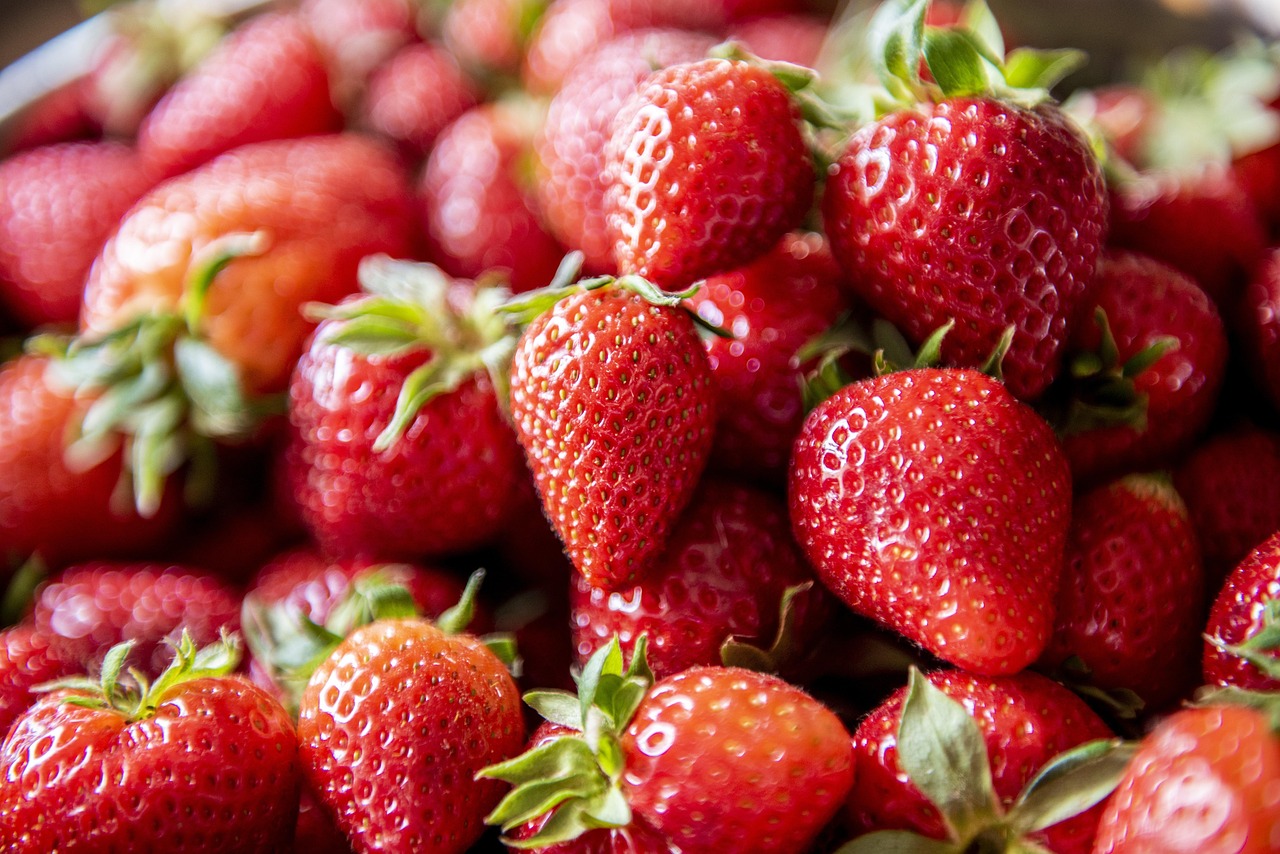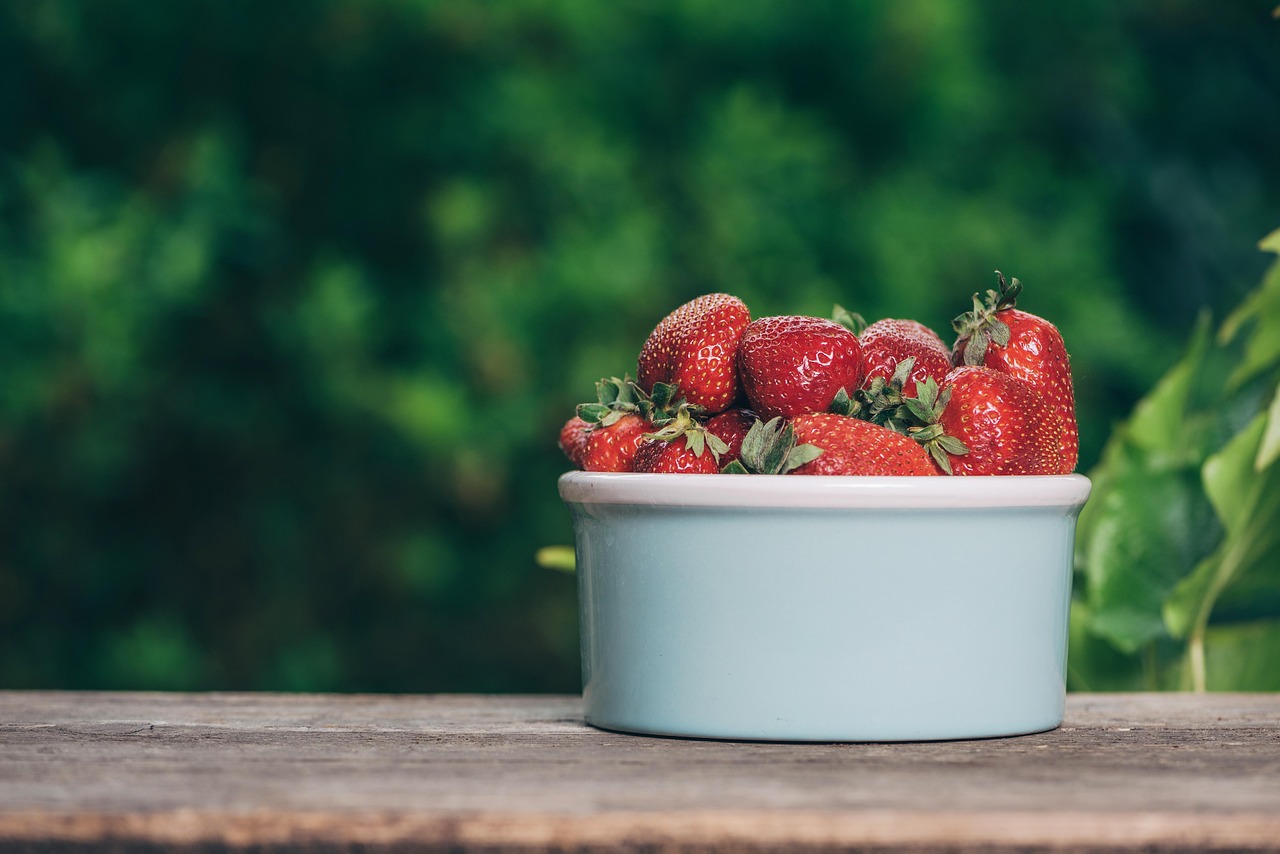Strawberry leaf problems can be identified by observing discoloration, wilting, or unusual spots. Common issues include leaf spot diseases, pests like aphids, and nutrient deficiencies. Proper identification leads to effective treatments such as fungicides, insecticides, or soil amendments.
Understanding Strawberry Leaf Problems

Strawberries are a popular fruit, cherished for their sweet flavor and nutritional benefits. However, growing strawberries can come with its own set of challenges. Gardeners often face various issues that affect the health and yield of strawberry plants. Recognizing the symptoms of these problems early is essential for maintaining a healthy crop.
Strawberry leaves can exhibit a range of problems due to environmental factors, pests, and diseases. The leaves are crucial for photosynthesis, which in turn supports fruit development. Therefore, any issues with the leaves can directly impact the overall health of the plant and the quality of the fruit produced.
Common symptoms of strawberry leaf problems include:
- Discoloration: Yellowing or browning of leaves can indicate poor health.
- Wilting: Leaves may appear limp and droopy.
- Spots: Dark or light spots can signify disease or pest damage.
- Curling: Leaves may curl or deform due to various stress factors.
Understanding the causes behind these symptoms is vital for treatment. Below are some common issues that strawberry leaves face:
| Issue | Symptoms | Treatment |
|---|---|---|
| Leaf Spot Diseases | Brown or black spots on leaves | Use fungicides; remove affected leaves |
| Aphids | Curling leaves; sticky residue | Insecticidal soap or neem oil |
| Nutrient Deficiencies | Yellowing leaves; poor growth | Fertilize with balanced nutrients |
It is important to regularly monitor strawberry plants for these issues. Early detection allows gardeners to take corrective actions promptly. This not only helps in saving the plants but also maximizes berry production.
In addition to these common problems, environmental factors such as poor drainage, insufficient sunlight, and extreme temperatures can also affect the health of strawberry leaves. Providing optimal growing conditions is essential to preventing many leaf-related issues.
Next, we will delve deeper into specific diseases that affect strawberry leaves, along with effective methods for identification and treatment.
Common Leaf Diseases in Strawberries
Strawberries are susceptible to several diseases that can significantly impact leaf health. Understanding these diseases is critical for effective management and treatment. Below, we will explore some of the most common leaf diseases affecting strawberry plants.
1. Leaf Spot Diseases
Leaf spot diseases are among the most prevalent issues faced by strawberry plants. These diseases are usually caused by fungal pathogens that thrive in humid environments. The symptoms may vary depending on the specific type of leaf spot disease.
- Symptoms: Look for small, dark spots on the leaves, which can grow larger over time. Yellow halos may surround these spots.
- Causes: Excess moisture, poor air circulation, and overcrowding can contribute to the prevalence of leaf spot diseases.
- Treatment: Remove affected leaves and apply a fungicide specifically designed for leaf spot control.
2. Powdery Mildew
Powdery mildew is another common issue that affects strawberry leaves. This fungal disease is characterized by a white, powdery coating on the leaves and stems. It thrives in warm, dry conditions with high humidity.
- Symptoms: White, powdery spots appear on the upper surfaces of leaves, leading to curling and distortion.
- Causes: Poor air circulation and overcrowding can exacerbate the problem.
- Treatment: Improve air circulation around the plants and use a fungicide to manage the outbreak.
3. Anthracnose
Anthracnose is a fungal disease that can affect various parts of the strawberry plant, including the leaves. It can lead to significant damage if not addressed promptly.
- Symptoms: Dark, sunken lesions may develop on the leaves, which can result in premature leaf drop.
- Causes: High humidity and wet conditions increase the risk of infection.
- Treatment: Fungicides can be effective, but it is crucial to remove all infected plant debris from the area to prevent re-infection.
Pest Management for Strawberry Leaves
In addition to diseases, pests can also cause significant damage to strawberry leaves. Effective pest management is essential for maintaining healthy plants. Here are some common pests and their impacts on strawberry leaves.
Aphids
Aphids are small insects that feed on the sap of strawberry plants. They can cause leaves to curl and may transmit viruses.
- Symptoms: Look for curled leaves, sticky residue on the plant, and visible aphids on the undersides of leaves.
- Treatment: Introduce beneficial insects like ladybugs, or use insecticidal soap or neem oil to control aphid populations.
Spider Mites
Spider mites are tiny arachnids that can cause significant damage to strawberry leaves. They thrive in hot and dry conditions.
- Symptoms: Fine webbing on leaves and stippling or yellowing of leaf surfaces.
- Treatment: Increase humidity around plants and apply miticides if infestations are severe.
Nutritional Deficiencies Affecting Strawberry Leaves
Nutritional deficiencies can also lead to poor leaf health in strawberries. Understanding the role of different nutrients is essential for preventing and treating these deficiencies.
Nitrogen Deficiency
Nitrogen is vital for plant growth and development. A deficiency can lead to stunted growth and yellowing of older leaves.
- Symptoms: Yellowing leaves with green veins, poor growth overall.
- Treatment: Apply a nitrogen-rich fertilizer to restore nutrient balance.
Potassium Deficiency
Potassium is crucial for photosynthesis and overall plant health. A lack of potassium can lead to weak plant structure and poor fruit quality.

- Symptoms: Browning leaf edges and yellowing between the veins.
- Treatment: Use a fertilizer that contains potassium to improve leaf health and fruit production.
Environmental Factors Impacting Strawberry Leaves

In addition to diseases, pests, and nutritional deficiencies, environmental factors play a significant role in the health of strawberry leaves. Understanding these factors can help gardeners create optimal growing conditions for their strawberry plants.
1. Watering Practices
Proper watering is crucial for healthy strawberry plants. Both overwatering and underwatering can lead to leaf problems.
- Overwatering: Can cause root rot, leading to wilting leaves and poor nutrient uptake.
- Underwatering: Can result in dry, crispy leaves that may turn brown at the edges.
To ensure proper watering, it is essential to monitor soil moisture regularly. The soil should be kept consistently moist but not soggy. Using mulch can help retain moisture and regulate soil temperature.
2. Sunlight Requirements
Strawberries require full sun for optimal growth and fruit production. Insufficient sunlight can lead to weakened plants and poor leaf health.
- Symptoms of Insufficient Sunlight: Leggy growth, small fruits, and pale leaves.
- Recommended Sun Exposure: At least 6 to 8 hours of direct sunlight each day.
Gardeners should choose planting locations that receive ample sunlight throughout the day. If growing in shaded areas, consider trimming back nearby plants to improve light exposure.
3. Soil Conditions
The quality of the soil is another vital factor affecting strawberry leaf health. Healthy soil promotes robust root systems and proper nutrient uptake.
- Soil pH: Strawberries prefer slightly acidic soil with a pH between 5.5 and 6.5. Testing the soil pH can help determine if adjustments are needed.
- Soil Drainage: Well-draining soil is essential. Poor drainage can lead to waterlogged conditions and root rot.
- Organic Matter: Incorporating organic matter like compost can enhance soil structure and fertility.
Regular soil testing and amendments can significantly improve growing conditions for strawberry plants, leading to healthier leaves and increased fruit yields.
Seasonal Considerations for Strawberry Health
The changing seasons also impact the health of strawberry leaves. Understanding how different seasons affect plants can help gardeners take proactive measures.
Spring Care
Spring is a critical time for strawberry plants as they emerge from dormancy. Proper care during this season sets the foundation for healthy growth.
- Pruning: Remove any dead or damaged leaves to promote new growth.
- Fertilization: Apply a balanced fertilizer to provide essential nutrients for growth.
- Pest Monitoring: Keep an eye out for early signs of pests as temperatures rise.
Summer Care
During the summer months, strawberries require consistent care to handle the heat and potential water stress.
- Watering Frequency: Increase watering frequency to ensure plants do not dry out.
- Mulching: Apply mulch to retain moisture and reduce weed competition.
- Pest Management: Continue monitoring for pests and apply treatments as necessary.
Fall Preparation
As the growing season comes to an end in the fall, proper care is necessary to prepare plants for winter dormancy.
- Harvesting: Ensure all ripe strawberries are harvested before frost sets in.
- Cleaning: Remove any plant debris to reduce disease risks in the next growing season.
- Covering Plants: In colder regions, consider using row covers or straw mulch to protect against frost.
Caring for strawberry plants across seasons helps maintain healthy leaves and enhances overall plant vitality throughout their growth cycle.
Advanced Strategies for Maintaining Healthy Strawberry Leaves

In addition to the basic care methods previously discussed, several advanced strategies can help ensure healthy strawberry leaves and improve overall plant vitality. Implementing these techniques can enhance your gardening success and lead to a more fruitful harvest.
1. Integrated Pest Management (IPM)
Integrated Pest Management is a holistic approach to controlling pests that minimizes the use of chemical pesticides. This method incorporates various strategies, including cultural, biological, and mechanical controls.
- Cultural Controls: Rotate crops to disrupt pest life cycles and plant disease-resistant strawberry varieties.
- Biological Controls: Introduce beneficial insects, such as ladybugs and lacewings, which feed on harmful pests.
- Mechanical Controls: Use row covers to protect plants from pests early in the growing season.
2. Regular Monitoring and Maintenance
Regular monitoring of your strawberry plants can help you catch potential problems before they escalate. Establish a routine to assess the health of your plants and take action as needed.
- Visual Inspections: Check leaves for discoloration, spots, or pests at least once a week.
- Soil Testing: Conduct soil tests annually to monitor nutrient levels and pH balance.
- Foliage Care: Remove any dead or diseased leaves promptly to prevent the spread of diseases.
3. Fertilization Strategy
A well-planned fertilization strategy is essential for maintaining healthy strawberry leaves. Different growth stages require different nutrient ratios.
- Early Growth Phase: Use a balanced fertilizer with equal parts nitrogen, phosphorus, and potassium to promote strong growth.
- Flowering and Fruiting Phase: Switch to a fertilizer higher in potassium to support fruit development.
- Post-Harvest Phase: After harvest, apply a slow-release fertilizer to prepare the plants for dormancy.
Final Thoughts
Maintaining healthy strawberry leaves is essential for the overall success of your strawberry plants. By understanding common leaf problems, their causes, and effective treatments, you can create a thriving environment for your strawberries. Regular monitoring, proper watering practices, and optimal soil conditions play integral roles in preventing issues before they arise.
Utilizing advanced strategies such as Integrated Pest Management allows gardeners to minimize chemical use while effectively controlling pests. Additionally, tailoring your fertilization strategy to the specific growth phases of your plants will ensure they receive the nutrients they need at the right times.
Ultimately, a proactive approach to strawberry care will lead to vibrant leaves, healthy plants, and bountiful harvests. With the knowledge you have gained from this article, you are better equipped to tackle any challenges that may arise during your strawberry-growing journey.
